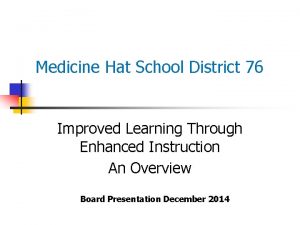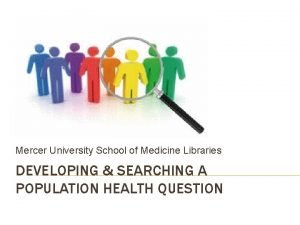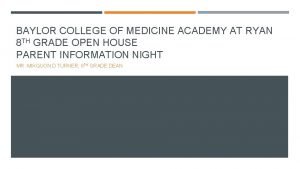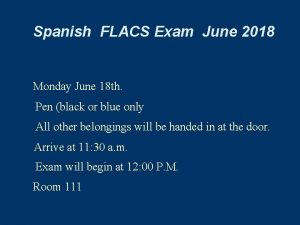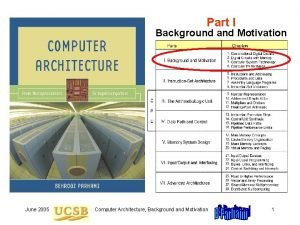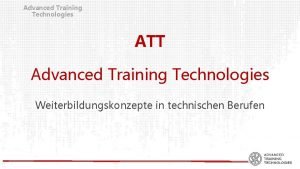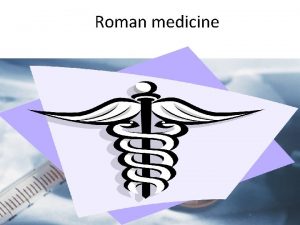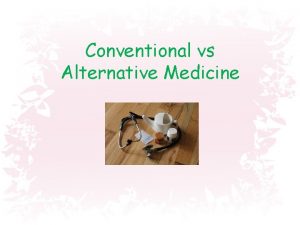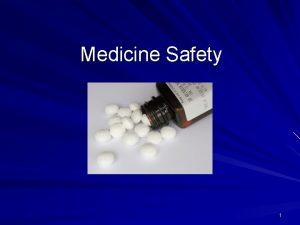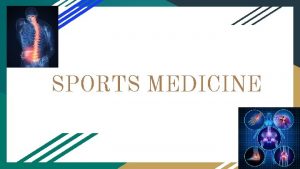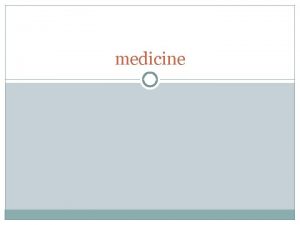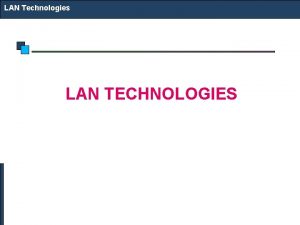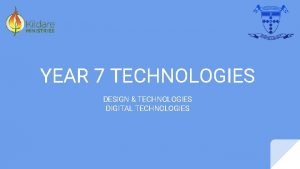School of Advanced Technologies in Medicine 16 June
















- Slides: 16

ﺑﻪ ﻧﺎﻡ ﺧﺎﻟﻖ یکﺘﺎ School of Advanced Technologies in Medicine 16 June 2021 1

Opportunities and challenges Zahmatkesh Maryam, Faridi-Majidi Reza, Ejtemaee-Mehr Shahram School of Advanced Technologies in Medicine 16 June 2021 2

School of Advanced Technologies in Medicine, 16 June 2021 3

Applications of nanotechnologies in Basic neuroscience � � � School of Advanced Technologies in Medicine, 16 June 2021 Improved signal detection Single-particle tracking of target molecules in live cells Detection of ligand– receptor dynamics in the cell membrane New tools for studying neuronal signalling processes Possible of local and systemic toxicity for in vivo applications of Quantum-dot nanotechnology Gabriel A. Silva. Nature Reviews, Neuroscience. Volume 7, 2006: 65 -74. 5

Applications of nanotechnology in clinical neuroscience � Applications of nanotechnology in neuroscience include research aimed at limiting and reversing neuropathological disease states. � Nanoparticles that promote neuroprotection by limiting the effects of free radicals produced following trauma (for example, those produced by CNS secondary injury mechanisms). � Neuroprotective strategies, in particular those that use fullerene derivatives; School of Advanced Technologies in Medicine, 16 June 2021 6

Applications of nanotechnology in clinical neuroscience � Nanoparticles designed to allow the transport of drugs and small molecules across the blood–brain barrier. School of Advanced Technologies in Medicine 16 June 2021 Gabriel A. Silva. Nature Reviews, Neuroscience. Volume 7, 2006: 65 -74. 7

Summary of applications of nanotechnology in AD treatment Antioxidant nanotechnology building blocks Carboxyfullerenes Hydroxyfullerenes Dendrimers Antioligomeric Amyloid aggregates resolubilization Neuroprotection Nanoparticles mediated Thermal energy supply Nanogels artificial chaperons Antiamyloid anti-assembly strategy Dendrimers Hydrated Fulleren Anti-amyloid toxicity Protecting against NMDA-R toxicity School of Advanced Technologies in Medicine 16 June 2021 Memantine (adamantine nanotechnology building block) Amir Nazema and G. Ali Mansoorib. Journal of Alzheimer’s Disease 13 (2008) 199– 223. 8

School of Advanced Technologies in Medicine, 16 June 2021 9

Schematic presentation of the biogenesis and composition of the three main classes of extracellular vesicles • Exosomes are small (40 -80 nm), relatively homogenous in size, and may contain (endosomal) proteins involved in their assembly, such as CD 9, Alix and TSG 101. Kooijmans S. AA. , et al. , International Journal of Nanomedicine 2012: 7 1525– 1541.

Exosome � They are concentrated carriers of genetic and proteomic information, and thus are believed to play important roles in intercellular communication. School of Advanced Technologies in Medicine, 16 June 2021 Kooijmans S. AA. , et al. , International Journal of Nanomedicine 2012: 7 1525– 1541. 11

School of Advanced Technologies in Medicine, 16 June 2021 12

School of Advanced Technologies in Medicine, 16 June 2021 13

Advantages over conventional drug delivery systems � Virus-based drug delivery systems, ◦ their potential for insertional mutagenesis or oncogenesis, high production costs, and risk of immunogenicity limit their clinical use. � Nonviral drug delivery vehicles, such as cationic polyplexes and lipoplexes, are generally considered to be less immunogenic and mutagenic, but cytotoxicity and low transfection efficiencies in vivo are still major challenges to overcome. School of Advanced Technologies in Medicine, 16 June 2021 14 Kooijmans S. AA. , et al. , International Journal of Nanomedicine 2012: 7 1525– 1541.

Exosome mimetics � It is well possible that not all components of exosomes are required for their proper functioning, an alternative strategy would be to mimic these vesicles synthetically. � By assembly of liposomes harboring only crucial components of natural exosomes, functional exosome mimetics may be create. School of Advanced Technologies in Medicine, 16 June 2021 15 Kooijmans S. AA. , et al. , International Journal of Nanomedicine 2012: 7 1525– 1541.

Opportunities and challenges Zahmatkesh Maryam, Faridi-Majidi Reza, Ejtemaee-Mehr Shahram School of Advanced Technologies in Medicine 16 June 2021 16

International Journal of Nanomedicine 2007: 2(4) 639– 649 School of Advanced Technologies in Medicine, 16 June 2021 17
 Advanced protection technologies
Advanced protection technologies Air liquide advanced technologies
Air liquide advanced technologies Advanced transportation technologies
Advanced transportation technologies Monash mph
Monash mph Yong loo lin school of medicine
Yong loo lin school of medicine Medicine hat school district 76
Medicine hat school district 76 Summerschools.suttontrust
Summerschools.suttontrust Emory clinic - school of medicine faculty
Emory clinic - school of medicine faculty Morehouse school of medicine registrar
Morehouse school of medicine registrar Mercer university school of medicine library
Mercer university school of medicine library Www.hisdchoice.com to apply online
Www.hisdchoice.com to apply online Advanced quantitative reasoning high school
Advanced quantitative reasoning high school 30 days has september
30 days has september Flacs checkpoint b spanish exam june 2018 answers
Flacs checkpoint b spanish exam june 2018 answers June 2010 physics regents answers
June 2010 physics regents answers June 2005 calendar
June 2005 calendar June 2016 grade boundaries
June 2016 grade boundaries





